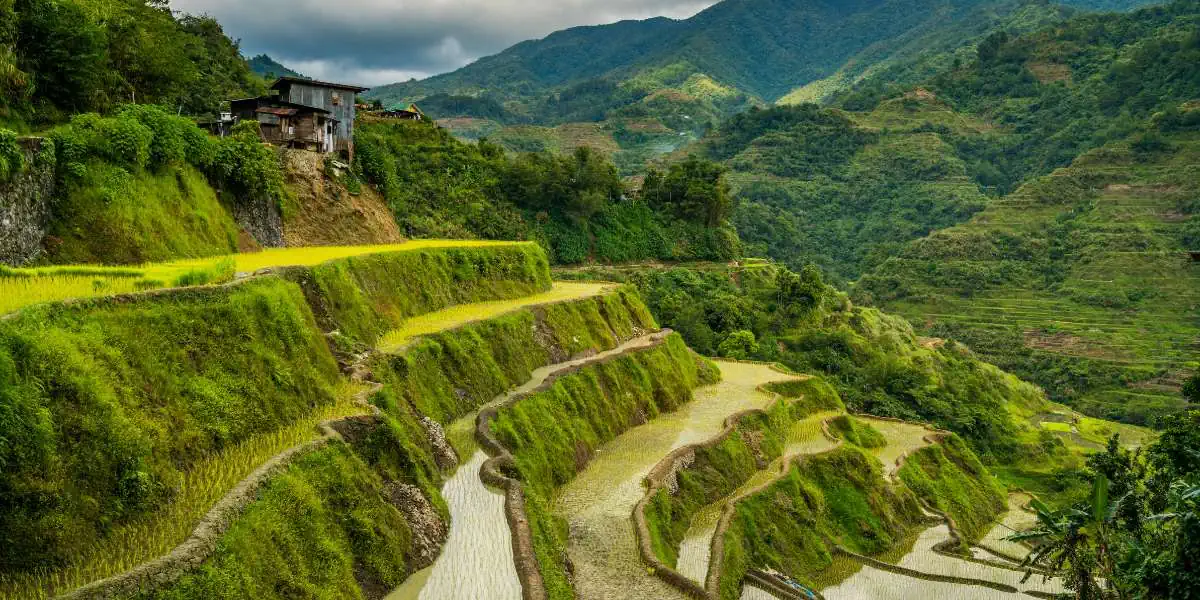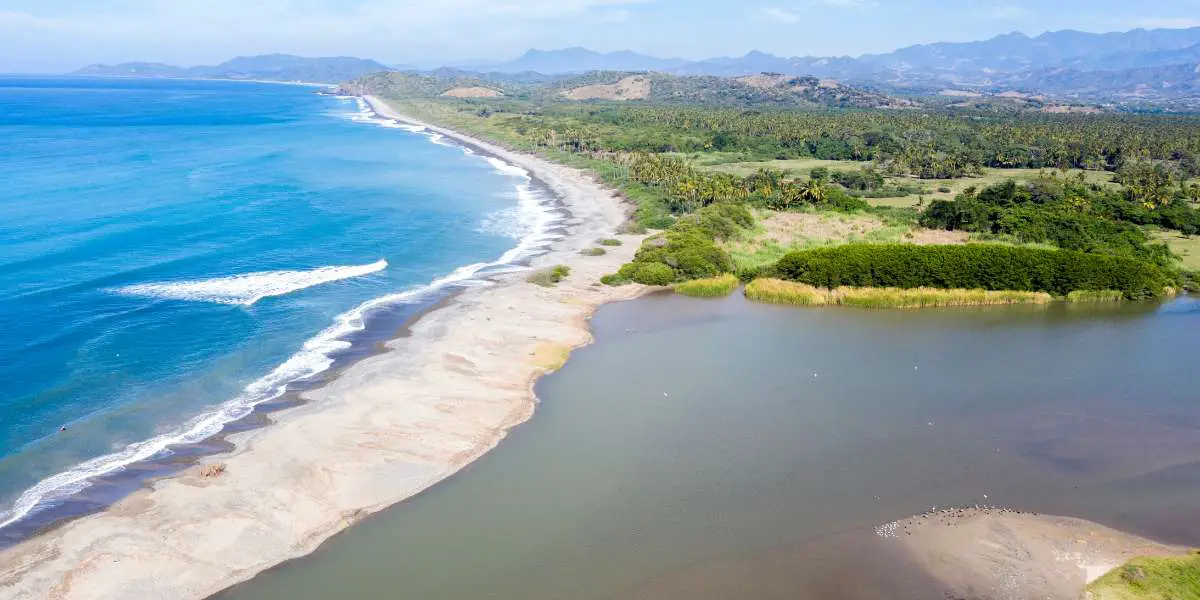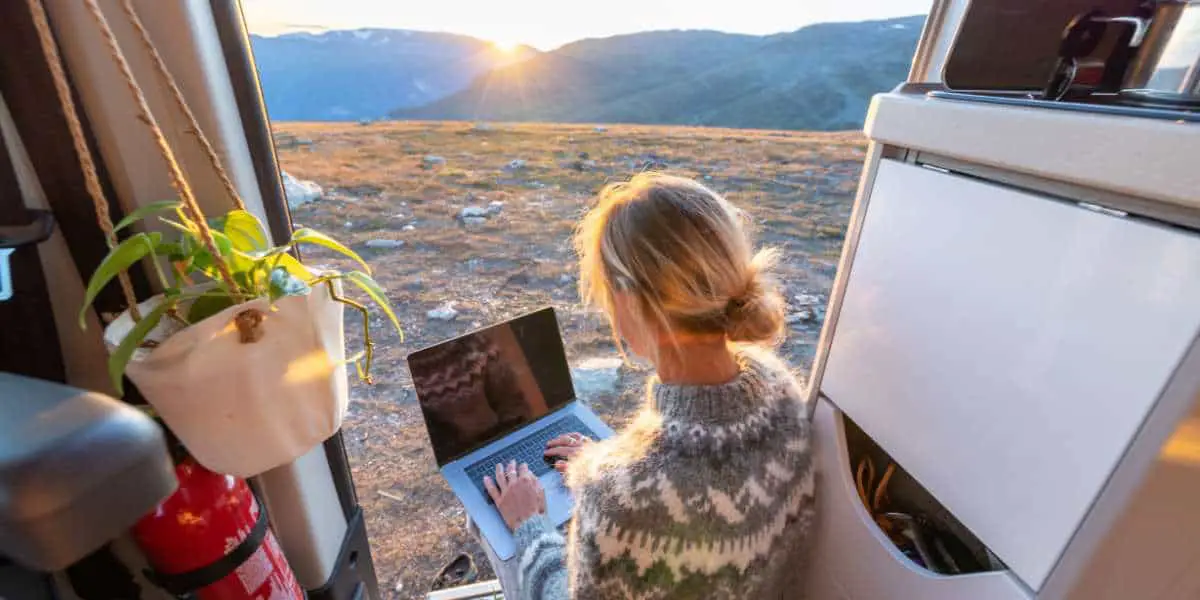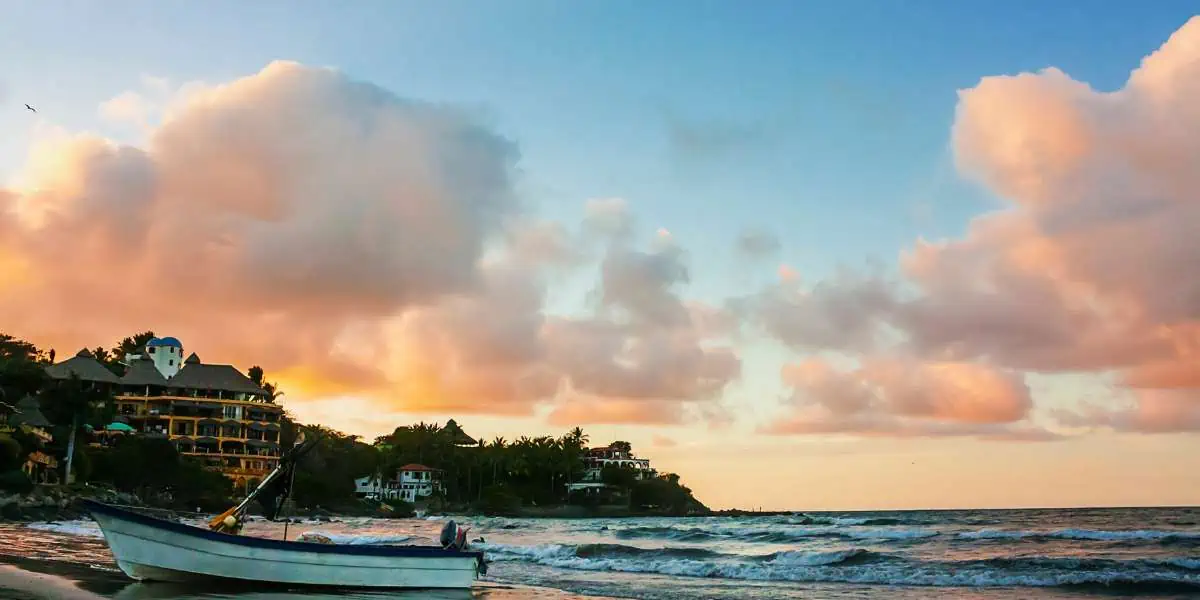Immerse yourself in the awe-inspiring Banaue Rice Terraces, a UNESCO World Heritage Site and a testament to human ingenuity. Embark on a captivating trek through this verdant landscape and discover the rich heritage of the Ifugao people.
Introduction
Nestled high in the misty Cordillera Mountains of northern Luzon lies one of the most spectacular sights in the Philippines – the Banaue Rice Terraces. Carved into the mountains over 2,000 years ago by the indigenous Ifugao people, these magnificent terraces stretch like stepping stones towards the sky.
Often referred to as the “Eighth Wonder of the World”, the Banaue Rice Terraces showcase the extraordinary craftsmanship of the Ifugao people. Through ingenious engineering, they transformed rugged mountainsides into a lush, cascading landscape of terraced rice paddies. The result is a breathtaking testament to the human capacity for reshaping the natural environment.
As a UNESCO World Heritage Site, the Banaue Rice Terraces represent a priceless cultural treasure as well as a unique ecosystem. An adventure through this terraced wonderland provides the opportunity to immerse oneself in the enduring heritage of the Ifugao while bearing witness to humankind’s intimate relationship with the earth.
Unveiling the Eighth Wonder of the World
The Banaue Rice Terraces serve as a living relic of the engineering brilliance of the Ifugao people. Hand-carved from the mountainside using only primitive tools, these ambitious terraces required tremendous community effort to construct.
A Legacy Over 2,000 Years Old
The earliest terracing is believed to date back over 2,000 years ago to the Banaue mountains, where the Ifugao cultivated taro and rice using a sophisticated irrigation system fed by tropical mists. Over subsequent generations, the Ifugao expanded the terraces in the Cordillera mountains using a technique called the hudhud hi al-luyu, which leverages the labor of entire villages to construct new tiers of paddies.
Through the centuries, the Ifugao have preserved the traditional wisdom and customs that enable the continued cultivation of these lands perched thousands of feet above sea level. The enduring legacy of craftsmanship and agriculture honored by these terraces provides visitors with a glimpse into the Ifugao worldview – one of kinship with the land.
Masterpiece of Agricultural Engineering
The ingenuity behind the creation of the Banaue Rice Terraces is staggering, showcasing the extraordinary agricultural engineering capabilities of the Ifugao. Constructed almost entirely by hand, the terraces utilize a sustainable design that leverages the natural contours of the mountains.
- Over 2,500 square miles of mountainside terraces
- Narrow lanes follow mountain ridges with walls standing 16 ft high in places
- Stonewalls and mud dykes retain water in paddies carved along the slopes
- Sophisticated irrigation system utilizing rainforests, streams, and waterfalls to direct rainfall runoff
The knowledge and customs that enabled such expert craftsmanship are a point of pride for modern Ifugao, many of whom still practice traditional farming techniques honed over millennia. These enduring practices sustain the rice terraces while preserving Ifugao heritage.
UNESCO Recognition
In 1995, UNESCO recognized the Banaue Rice Terraces as a World Heritage Site. This honor celebrated the terraces not only as a globally significant landscape of breathtaking beauty but also as a living cultural relic showcasing the ability of humankind to forge an agricultural system in perfect harmony with the environment.
UNESCO distinguishes the Banaue Rice Terraces as:
- A continuing cultural landscape shaped by two millennia of rice cultivation
- Sustaining unique traditional knowledge and customs of the Ifugao people
- Manifesting a mastery of engineering that allowed productive agriculture in rugged terrain
- Blending immaculately with the majestic mountain landscape
By embracing traditional ways of life in the modern era, the Ifugao enable visitors to witness a culture still thriving within the terraces their ancestors carved from these lush mountains.
Embark on an Enthralling Trek
One of the most captivating ways to experience the magic of the Banaue Rice Terraces is embarking on a hike through this emerald green maze. Various hiking trails cater to all fitness levels while showcasing the grandest highlights.
Choose Your Route
Several trails offer unique adventures traversing the landscapes surrounding iconic viewpoints:
Banaue Viewpoint Trek
- Easy 3-hour hike with dramatic panoramas
- Ideal for families and those with limited mobility
Batad Rice Terraces Trek
- Challenging full day hike to breathtaking Batad terraces
- Rewards with views of Ampacao terraces and Tappia waterfall
Mount Amuyao Trek
- 2-3 days summiting the tallest mountain in Ifugao province
- Offers stunning 360° views from the peak at 2,702 m (8,865 ft)
Regardless of chosen route, a local Ifugao guide provides valuable perspectives on terraces cultivation and heritage while navigating trails.
| Trek | Duration | Difficulty | Highlights |
|---|---|---|---|
| Banaue Viewpoint Trek | 3 hours | Easy | Iconic Banaue viewpoint, traditional villages |
| Batad Rice Terraces Trek | Full day | Moderate | Batad amphitheater terraces, Tappia waterfall |
| Mount Amuyao Trek | 2-3 days | Difficult | 360° summit views, Ifugao villages, hot springs |
Wind Through a Patchwork Landscape
As trekkers traverse Ifugao along these routes, the terraces reveal their grandeur from ever-changing panoramas. The paths wind through the patchwork green contours revealing the diversity of this hand-carved region.
Verdant rice paddies cascade down the lower slopes, giving way to open grasslands and rainforests on the steeper inclines. Dramatic limestone outcrops jut from the mountains as streams pour over ledges, nourishing the terraces through an ancient irrigation network. Beyond the paddies, earthen villages emerge with thatched rooftops peeking through the mist.
The symbiotic relationship between the terraces and their surrounding ecosystem becomes apparent across the landscape. Preserving these interwoven environments remains essential to sustaining both Ifugao livelihoods and natural splendor.
Uphold Environmental Responsibility
To maintain the delicate balance enabling the terraces to thrive, visitors must uphold sustainable practices and environmental responsibility when trekking through Ifugao. By remaining on marked trails, limiting waste, and being respectful of villages along the routes, we enable the vibrant culture and landscape to endure.
Ifugao relies on tourism dollars to preserve the World Heritage terraces for future generations. Following sustainable trekking practices allows these time-hewn wonders to survive into the modern era as thriving centers of agriculture, biodiversity and indigenous traditions.
Immersive Cultural Experiences
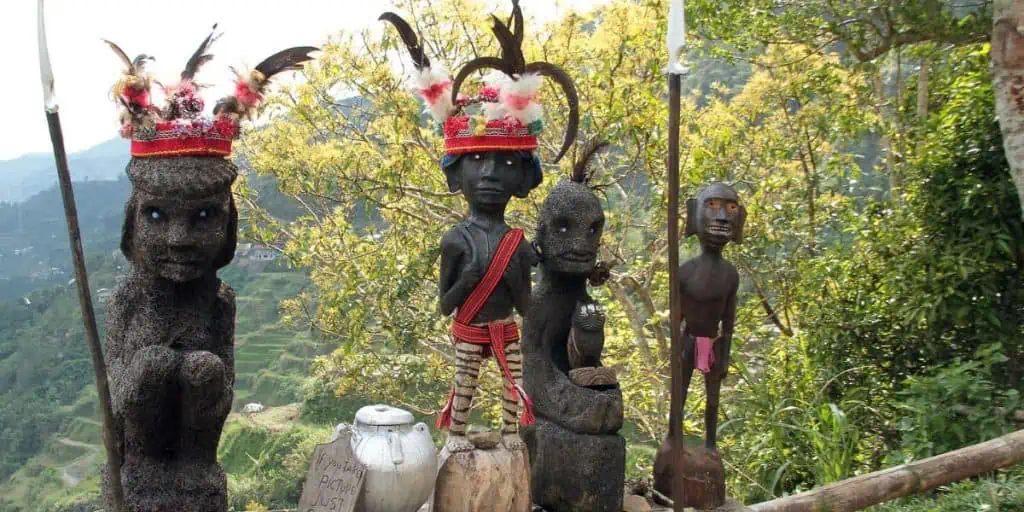
Beyond marveling at the slopes of the Banaue Rice Terraces, visitors can enrich their adventures through immersive cultural experiences with the Ifugao people. After centuries safeguarding ancestral ways of life, the Ifugao happily share their traditions with curious visitors.
Connecting with the Ifugao People
Descendants of the engineering masterminds behind the iconic rice terraces, the Ifugao people have preserved age-old customs enabling their unique mountainside civilization to endure into the modern world. Ifugao families still inhabit traditional homes built of stone, timber and cogon grass thatched roofs harmonizing with the lush surroundings.
Visitors often identify the Ifugao people by their distinctive attire. The men wear striped loincloths called wanno along with vests, accessories made of beads and brass, and headgear decorated with feathers. The women don intricately beaded blouses and colorful wraparound skirts accented with pattering motifs.
When encountering Ifugao people along the trekking routes or in local villages, travelers should smile warmly and offer the Ifugao greeting “Igat ad Pagay” as a sign of friendship. The Ifugao frequently invite visitors into their homes to share meals, teach weaving, and explain spiritual rituals honoring their rice deity Bulul.
Preserving Cultural Heritage
Tourism helps provide livelihoods enabling Ifugao communities to preserve cultural heritage while adapting to modern times. Visitors can support traditional Ifugao culture through purchasing locally produced handicrafts and heirloom fabrics as well as participating in sustainable village tours.
Several organizations strive to uphold Ifugao traditions and sustainable development, including:
Save the Ifugao Terraces Movement (SITMo) – Nonprofit supporting Ifugao communities in preserving rice terraces and culture.
Banaue Living Traditions Museum– Showcases artifacts honoring Ifugao heritage and values education of youth.
RTDC (Rice Terraces and Cultural Heritage College) – Established by SITMo to teach sustainable agriculture and handicrafts.
By contributing to these organizations or participating in their programs, visitors directly enable the enduring livelihood of the Ifugao culture.
A Feast for the Senses
In addition to cultural offerings, Ifugao cuisine provides a literal feast for the senses. The foods of the region offer a mouthwatering blend of flavors accentuated by the fresh ingredients lovingly grown across the terraced mountainsides and forests.
Heavenly Highland Harvests
The ingredients flourishing across Ifugaoland translate to a bounty of produce, meats and rice at the heart of local dishes. Menus highlight sweet potatoes, heirloom rice varieties, wild ferns, nourishing greens, and river fish along with chicken, carabao and wild boar raised on open pastures.
Ifugao chefs expertly transform this highland harvest into sumptuous offerings. The region boasts a range of appetizing specialties showcasing traditional recipes and localized twists:
- Tinuno – Smoked meat delicacies named after the traditional cooking process
- Hinohan – Claypot stews brimming with vegetables and meat simmered to perfection
- Wigan – Local sausage stuffed with fresh native spices and herbs
- Pinuneg – Salt cured meat with a signature pink hue enjoyed with condiments
- Tinarogan – Lard fried river fish enrobed in a crispy and flakey exterior
Partaking in these hearty Ifugao dishes offers satisfying sustenance along mountain treks while providing a fascinating insight into indigenous food culture.
Savoring Cultural Cuisine
Beyond tantalizing the tastebuds, Ifugao cuisine carries deep cultural resonance within each dish. Meals maintain ceremonial status within a community that revolves around rice cultivation.
Ifugao dining etiquette emphasizes sharing meals without reservation while upholding the critical role of rice in communal bonds. The preferred method of consumption involves gathering around a table and consuming rice by hand along with viands served in communal vessels.
By participating in an authentic Ifugao feast, visitors reinforce cultural bonds through the communal act of nourishment central to upholding community rapport. The honored tradition of feasting remains essential to the hospitable character of the Ifugao people.
Planning Your Adventure
When preparing for a journey to traverse the Banaue Rice Terraces, practical preparation allows travelers to make the most of this bucket list quest. Anticipating needs in advance enables fully immersing in the grandeur of Ifugao without distraction.
Reaching the Rice Terraces
The Banaue Rice Terraces sit approximately 9 hours north of Manila by private transfer. Adventurers originating elsewhere in the Philippines can reach the region via flights into Tuguegarao or Cauayan airports followed by scenic overland transfers.
Here are the best options for traversing Ifugao:
- Airplane – Fly into northern Luzon airports, then transfer 3-4 hours overland
- Overnight Bus – Buses from Manila take 8-10 hours but offer sightseeing
- Private Driver – Hire a private van and driver for door-to-door convenience
Visitors short on time should consider flying directly to a local airport to maximize hours spent immersed in terraces. Overland transfers nonetheless reward with spectacular vistas across northern Luzon’s winding mountain roads.
Where to Stay
The vibrant town of Banaue provides the most tourism infrastructure including varied accommodation. Authentic homestays in native Ifugao huts also popular cultural immersion. Here are top lodging options near iconic viewpoints:
Banaue
- Banaue Hotel
- People’s Lodge
- Native Village Inn
Batad
- Batad Guesthouse
- Simon’s Inn
Bangaan
- Joselito Hamog Homestay
- Viewpoint Bed & Breakfast
Regardless of budget, travelers can wake up alongside the terraces in humble, cozy lodges resonating with indigenous character.
Essential Packing Tips
Comfortable attire and shoes allow fully embracing Ifugao’s breathtaking terrain on leisurely hikes. Essentials include:
- Hiking shoes – Sturdy grip for stone steps and dirt trails
- Layers – Light jackets for cooler morning treks
- Rain gear – Especially during rainy June-October season
- Hat/sunglasses – For sun protection
- Camera – For stunning terraced photos!
While Ifugao province is generally safer than urban areas, exercising normal precautions regarding valuables allows peacefully immersing in lush surroundings.
Conclusion
A visit to the UNESCO World Heritage Site Banaue Rice Terraces rewards adventure seekers with a cradle of indigenous culture symbiotically woven into a land hewn by human hands. More thanjust feats of engineering grandeur, these slopes enable a thriving community and ecosystem that persists in harmony as a living testament to our human capacity to reshape the earth itself to meet our needs.
Beyond marveling at sheer terraced beauty, take time to glimpse the soul of Ifugao. Hike lush forested paths, share humble meals and conversations within native huts, peruse locally crafted wares at a sleepy mountain market. In these quiet moments, witness a culture thriving – against odds, through ingenuity, in balance with the land.
Let the terraces transform your perspective. Allow their wonder to overflow into your travels beyond Ifugao, cultivating passion for the diversity of global human heritage. Wherever your future journeys take you, carry the spirit of Ifugao – one of kinship, resilience, and glorious humanity.

